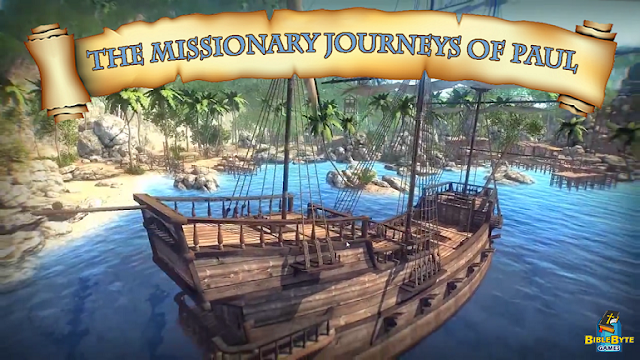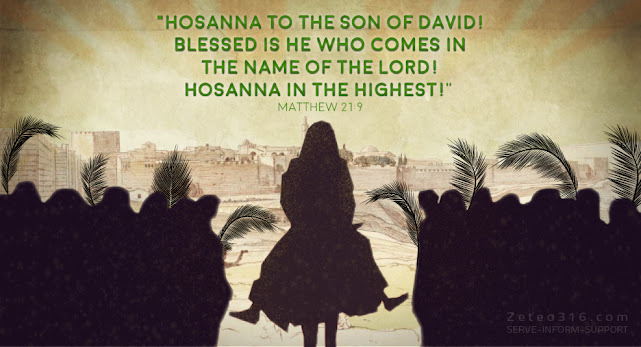Lesson 5
PAUL THE APOSTLE
(Missionary journeys)
Objective: To understand a brief picture of Paul's missionary journeys. We should fulfill the duties God has given each one of us. To imitate an excellent example of Paul and familiarize the place where Paul went, with the gospel.
A portion to read: Acts. ch 12 - ch 28
Memory verse: 2 Tim. 4: 6-8
For I am already being poured out as a drink offering, and the time of my departure is at hand. 7 I have fought the good fight, I have finished the race, I have kept the faith. 8 Finally, there is laid up for me the crown of righteousness, which the Lord, the righteous Judge, will give to me on that Day, and not to me only but also to all who have loved His appearing.
Paul the Apostle ( Act 12:25; 13:3)
Barnabas and Saul were doing their ministry in Antioch. The apostles and the church found them useful for evangelization. The Holy Spirit also revealed the same things through prophets in Antioch. So the apostles separated them for the work that the Lord has prepared for them by laying their hands on them and praying over them. From then onwards they set out for evangelization as full-time ministers of apostles.
Missionary Journey of Paul ( Acts. 13: 4; 14:27)
Paul's first missionary journey was in AD 48. He was accompanied by Barnabas and John Mark. From Antioch, they came to Seleucia and from there to Cyprus, the home place of Barnabas. In Cyprus, they went to Salamis and Paphos and preached the gospel. Later they came to Perga in Pamphylia, where John Mark departed and returned to Jerusalem. It is from here that, we see Paul using the Greek name Paul instead of the Hebrew name Saul. After this, they moved on to Antioch (birth province of Paul), then to Iconium and to Lystra. In Lystra, they faced great trails. The people stoned Paul and he was left for dead. It is believed that Timothy saw Paul for the first time the Lystra
From there Paul went to Derbe. From Derbe, they returned back to Antioch and in their return journey, they visited all these places except Cyprus. The churches in Antioch, Lystra, and Derbe are together known as the churches in Galatia.
The Jerusalem council
Certain men came from Jerusalem to Antioch and taught that the Gentiles who believed in Jesus should be circumcised according to the custom of Moses, to be saved. But, the Antiochian believers opposed them and this led to conflict. James the brother of Jesus, our Lord, was the chairman of the council. Peter, Paul, Barnabas, and others made explanatory speeches. At last, all of them came to the same conclusion. The chairman declared it and thereby confirmed that the Jewish laws were not applicable to the Christian salvation.
Paul's Second Missionary Journey
In the second journey, Silas was the companion of Paul. They started through land and visited all the places of the first journey and later headed for the churches in Asia Minor. From Lystra, they were accompanied by Timothy. They reached Antioch and from there they went to Troas. Luke Joined them in Troas
and they went to Macedonia in Europe. From Tros, they came to Neapolis, From there to Philippi. In Philippi, They were imprisoned. But they were miraculously saved. The keeper of the prison and his family were saved. From there, they came to Thessalonica, and later to Derba and to Athens. Here also they faced many oppositions. From there, they came to the capital of Achaia, Corinth. There Paul met Aquila and Priscilla
Corinth was very famous for its wickedness. They spent one and a half years in Corinth. The epistle to Thessalonians was written while Paul was in Corinth. When opposition arose, Paul came to Ephesus, along with Aquila and Priscilla. From there they returned to Caesarea and them to Jerusalem and back to Antioch.
Paul's Third Missionary Journey
From Antioch, Paul visited the Galatian churches and to Ephesus, the capital of Asia. Apollos had already reached Ephesus before that. He was born at Alexandria and was a disciple of John, the Baptist. Aquila and Priscilla taught him the full doctrine. Apollos later went to Corinth.
After his departure, Paul came to Ephesus and it led to a revival. He taught the word of God in the Synagogues and in the school of Tyrannus. Many churches were found in the neighboring places. From there, Paul went to Macedonia. From there he came to Corinth through Illyricum. Epistle to Corinthians was written from Macedonia and the epistle to Romans was written from Corinth. From Corinth, he started his return journey, visiting Troas and Assos. He came to Miletus and was met by the Ephesian church elders and after enquiring about the church, he returned to Jerusalem. Then he came to Patara, Tyre, and later to Ptolemais and Caesarea. Here the Holy Spirit reminded him to come in Jerusalem.
The Jerusalem Problem.
When Paul reached Jerusalem, the Jews stirred up the people against Paul. The Centurian imprisoned Paul, to save his life. From there, Paul was talked before the Sanhedrin council and also before Felix. But Paul understood the Plot of Jews to Kill him and he appealed to Caesar for help (He gave an appeal in a Roman royal court). Agrippa II also questioned Paul. Always Paul was proved to be innocent, Paul used his opportunities everywhere to share the gospel. But in this period, he had to live in prison for about 2 years.
Paul's Journey to Rome
Paul was taken to Rome with Luke and Aristarchus under the centurion named Julius. During the journey, Paul got the mercy of centurion to get down at Sidon. Later they faced shipwreck. But they sailed again to Rome and tried to reach Phoenicia. But a tempestuous head wind arose called Euroclydon. The ship was wrecked but the men saved their lives. They came to the island of Malta. They stayed there for 3 months. From there they returned to Rome in another ship. Later, they came to Syracuse, Puteoli, and Tree Travers. The brothers came to all these places to meet Paul. Then they arrived in Rome and Paul was permitted to live in a rented house with soldiers to guard him. He lived there for 2 years, with some freedom. The Jews also came there to speak to Paul. It is during this period that Paul wrote his prison epistles - Philemon, Colossians, Ephesians, and Philippians.
After 2 years, Paul was set free in AD 63. Paul returns to Ephesus. He took Timothy from Macedonia and gave him the responsibility of the church in Ephesus. Timothy was also given the charge of work in Crete. Later he spent the cold season in Nicopolis ( Titus 1:5,3:12). In AD 64, he was again arrested and imprisoned in Rome. His last epistle of Timothy is supposed to be written during this time. There is no evidence of any chance of him to set free in the second epistle of Timothy ( 4:16-18). Thus Paul was beheaded by Emperor Nero, in AD 66 to 67. In Paul's own words, he fought a good fight of faith, he finished his race and kept his faith and crown of righteousness was waiting for him. After 2 years of his death, Jerusalem was destroyed.
Paul's Epistles
13 epistles were written by Paul, from the Romans to Philemon. Hebrews is also considered to be written by him. Thus 14 epistles were written by Paul.















Comments
Post a Comment